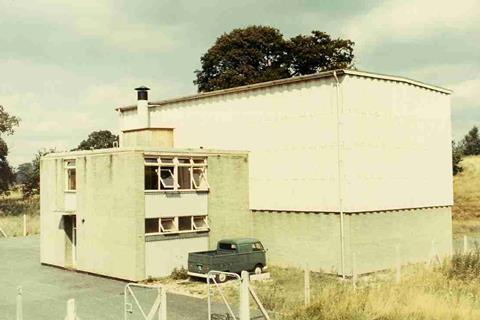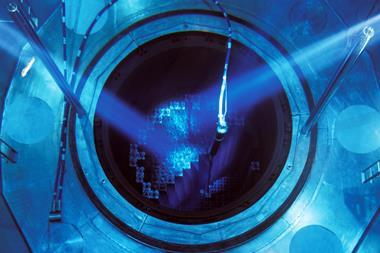The Imperial College Reactor Centre (ICRC) in Ascot has become the first reactor site to be fully decommissioned under modern rules in UK nuclear history, and only the third UK reactor site to have completed this process. Its land is now safe to use for other purposes.
Part of Imperial College London, ICRC was opened in Silwood Park in 1965 as one of only four university reactors in the country. When it closed in 2012, it was the UK’s last civilian research reactor.
The water-cooled reactor was small in reactor terms – 7m deep and 1.2m in diameter – generating 100kW of heat. The university used the reactor mainly for teaching purposes, but also for research in many fields of neutron and reactor physics. Physics, chemistry and engineering students from the University of London were able to visit and get experience of working with neutrons, gamma rays and radioisotopes. Student research focused on neutron activation analysis, which is used to determine the concentration of elements in different materials. When the reactor was last used in 2010, it also had some commercial uses, including producing radioisotopes and calibrating radiological instruments.
Trevor Chambers joined Imperial as head of the reactor centre from the UK Atomic Energy Authority to put together the complex decommissioning plan, which took seven years and was overseen by the Office for Nuclear Responsibility (ONR). The first stage involved removing 31 fuel rods and four control rods, along with intermediate-level waste, and transporting it all to Sellafield in Cumbria for storage and reprocessing. Removal of the fuel was completed in 2014.
‘We had to build and design a lot of equipment from scratch to enable us to safely remove the fuel rods from the reactor and transport them to Sellafield,’ says Chambers. ‘We built a “flaskway” over the reactor and removed the 31 rods in groups using a small flask shielded with lead to protect the staff from the radioactivity. Once all the rods were safely inside the transport flask, it was wheeled out of the building and lifted onto the secure transport vehicle by a mobile crane before it was taken to Sellafield. Until the water was drained out we were essentially producing another reactor within the transport flask, so we had to show the ONR that there was no danger of the transport flask going critical.’
Decommissioning of the reactor and surrounding bioshield was completed in February 2020. The building that housed the reactor needed to be radiologically and chemically clean before it was knocked down and debris transported to low-level waste sites. Demolition of all building structures was finished in April 2021 after being delayed by the Covid-19 pandemic and by a family of badgers which had re-occupied nearby setts.
Final clean-up included testing the soil samples for a range of radionuclides using gamma spectrometry. All soil samples analysed by Imperial now have radiation at normal background levels. The Silwood site now no longer falls under the ONR’s regulatory control.
‘The site is being retained by Imperial and forms part of the wider Silwood Park Campus, which is a centre for ecological research and policy,’ says Ross Manson, college radiation protection manager. ‘The specific site of the reactor centre site is being developed as an open space for leisure use by staff and students.’



















No comments yet